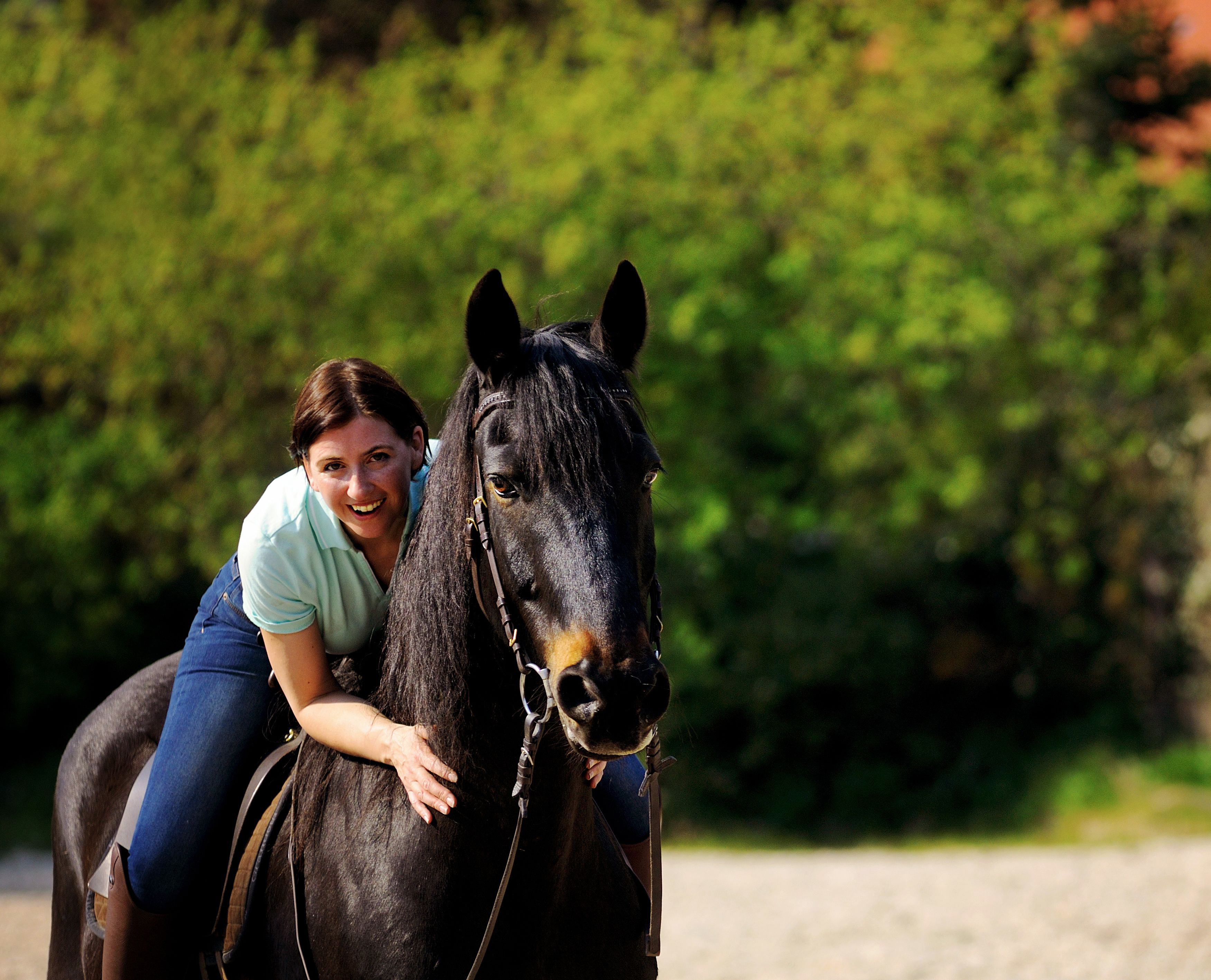
The sitting trot struggle
Ah yes, the dreaded sitting trot. For many riders, it's the lesson they love to hate. But why is that? And more importantly, how can you change that if you're not one of those lucky riders who don’t struggle with it?
The Sitting Trot Struggle
There are two parts to the problem. First, you need a flexible pelvis. As soon as you tense up, whether in your ankles, knees, or hips, you’ll start bouncing around instead of flowing smoothly with your horse’s movement. Second, your horse needs to be moving correctly through its back—otherwise, you won’t be able to sit the trot comfortably. Unfortunately, these two things are connected. If you're bouncing, your horse will brace its back, and if your horse isn’t moving freely through its back, staying relaxed is nearly impossible.
Let’s start with your seat. If you’re familiar with concepts like having a soft gaze or thinking of your body as a “ball,” be sure to revisit them. If not, stay tuned—I’ll be posting a blog article explaining these techniques soon. Mastering these basics will help you sit deeper, more balanced, and more fluidly in the saddle, no matter what gait you’re riding.
Common Mistakes to Avoid
One mistake you often see—at shows and in lessons—is riders leaning back to absorb the motion. But leaning back blocks both you and your horse. It’s uncomfortable for the horse, which has to deal with the impact of your pelvis pushing diagonally forward. Plus, it puts you behind the movement. Remember from your very first riding lesson: you want to sit with the movement, not ahead or behind it.
Also, avoid standing in the stirrups or gripping with your thighs. Neither will help, and both will only make sitting the trot harder. Gripping with your thighs or standing in the stirrups pushes you up and out of the saddle, and the result is often bouncing around like a rubber ball.
The Key to the Sitting Trot
The most important thing when sitting the trot is to stay relaxed. Let your legs hang loosely. Your ankles and knees should remain flexible. This is easiest in saddles with minimal or no knee rolls, as big knee rolls can restrict your movement. Stay upright in the saddle. A helpful visualization is to imagine growing upward like a tree from the saddle. If you’re unsure, it’s better to lean slightly forward than backward.
Look where you’re going. Trust that you’ll feel if your horse is connected through the reins, and avoid looking down at the horse or the ground. The moment you look down, your deep, relaxed seat disappears. Your head is heavy, and when you drop it, tension builds in your neck and shoulders, blocking the flow of movement through your body and into your horse. It also stiffens your arms, which makes it harder to maintain a soft rein contact.
So, keep your head up and your gaze forward, looking where you want to go. Let your arms hang softly, with your elbows slightly bent. When you hold the reins in upright fists, your horse will feel the lightest, most comfortable connection to its mouth, and this will help it carry itself better.
Get Your Pelvis Moving
As I mentioned, you need a flexible pelvis. Try sitting on a Balimo chair, if you have one, and see if you can tilt the seat plate in every direction. If you don’t have a Balimo chair, a fitness ball or just sitting on a flat surface works too. Can you tilt your pelvis forward and back equally? What about lifting each side up and down? When you sit on a ball and move your pelvis, does the ball roll smoothly in every direction? If not, it might be time to see an osteopath or do some stretching exercises to improve your mobility.
My Top Tip for Sitting the Trot:
Here’s my ultimate tip. The next time you need to sit the trot, imagine you’re riding a bike backward. You don’t actually have to move your legs; just picture it in your mind. Visualization triggers your muscles to react, helping your pelvis move naturally with your horse. This keeps you relaxed and in sync with the horse’s motion. Let your legs hang loose, and you’ll be amazed how much easier sitting the trot becomes with this mental trick. Give it a try and let me know how it works for you!
Want more tips to improve your riding? Check out the book Equihypnose® – Training Program for Better Riding. Happy riding, and good luck with the sitting trot!
Warmly,
Nicole
